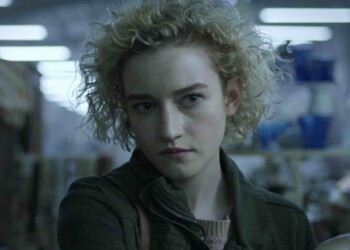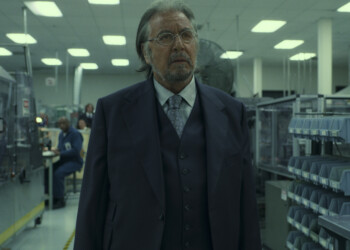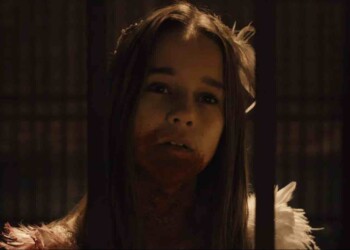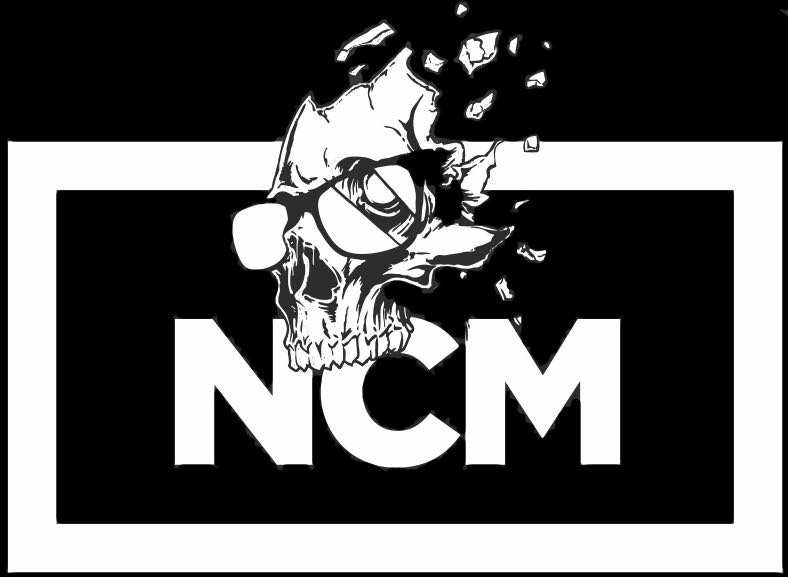Trying to build a novel universe in comic books is like trying to build a city in a shot glass. You only have twenty-two pages to convey the history of a world that never existed, to fill that world with characters that have their own motivations and desires, and to lay the stones in the road that these characters will walk.
And by the way, you need to do this all while having the story function as a commercial because you are trying to sell the next issue. The launch of a new book has to be perfect proportions of flash and function.
It is an idiot’s journey. When attempted, the first few issues of a book become dense with exposition and opaque story devises meant to hide information dumps the way the news broadcasts did in The Dark Knight Returns.
The Dying and The Dead #2 continues to show that this dopy exercise is unnecessary. Writers are not Gods. Gods build worlds. Writers just write stories. So rather than trying to establish his world right away writer Jonathan Hickman just starts telling his story and trusts that the world he has designed will coagulate around it.
This approach creates a tight, focused narrative playing out in a foggy aura of mystery.
It is 1969. The Colonel holds his wife’s hand as she is slowly killed by cancer in a New Mexico hospice care facility. An ivory skinned gentleman enters with a small gift wrapped box and places it between the woman’s feet before telling the Colonel that there might be a way to save her.
Jump to the middle of the Texas desert, there is a lone church and below that is a city. A city that houses a race of ivory skinned immortals. The ivory immortals tell the Colonel that they can save his wife if he retrieves an item for them. He agrees.
Nothing is explained. Everything is simply witnessed. Context is not given. It is earned. We know nothing about the city or the nature of the immortals yet the world is built by what we see.
The way the church stands lonesome, stark against orange sky and brown sand and the way the hidden city hangs from tree roots above a subterranean lake do more to build the universe than exposition ever could. We don’t need to know who the immortals are or how they are immortal. We don’t need to know how they know the Colonel or why he is the one they picked to retrieve the mystery item because it’s not relevant to that exact scene. Because Hickman is such a charming and skilled writer, we are willing to trust that a time will come when it is relevant and it will be explained in a pertinent way.
All the extra background we need to learn we learn through natural dialog. The Colonel met the immortals when he was fighting in WWII and helped them out when something or someone tried to burn their city down.
That’s all we need to get things started. Hickman is masterful in the way he only reveals information about the world he created when the story calls for it. It creates an organic progression. It keeps the story kinetic. You never feel like a reader. You feel more like a voyeur, watching the story from behind bushes and over the sills of windows.
The charm and deftness of the writing shoos away any confusion. You want to follow the narrative not only because you want answers but because you are engaged and you become interested in every crazy new element the story is going to introduce.
Questions transform into mystery. Mysteries are hard to maintain because once they have a resolution they are no longer interesting. However, if you string a mystery on too long it become a tease. Every answer in The Dying and the Dead comes with a new morsel of intrigue. You are always engaged; always wanting to press forward and the universe becomes clearer as the mystery goes deeper.
The Dying and the Dead #2 sees the Colonel collecting his old WWII buddies to help him with his mission. It has been over twenty years since these men where soldiers. They are all haggard men with degenerative diseases and failing bodies. The book enjoys playing with the idea that the WWII era of men was the last generation with a warrior’s spirit and that the generation that followed got to grow soft in the freedom earned by their progenitors. So of course an immortal race with endless perspective would pick warriors from the greatest generation in their time of need.
Each new team member is basically a variation of a Gran Torino era Clint Eastwood, but the different path each man took after the war changed them in ways that make each feel different and interesting.
The Dying and the Dead has a simple mission. Tell a story. Hickman builds a mythos by stacking small moments on top of each other, asking the reader to join him in the joy of building a universe. Watching a world conceive itself through dialog and small throw away moments creates immersion while managing to craft one of the most promising launches in all of comics.






